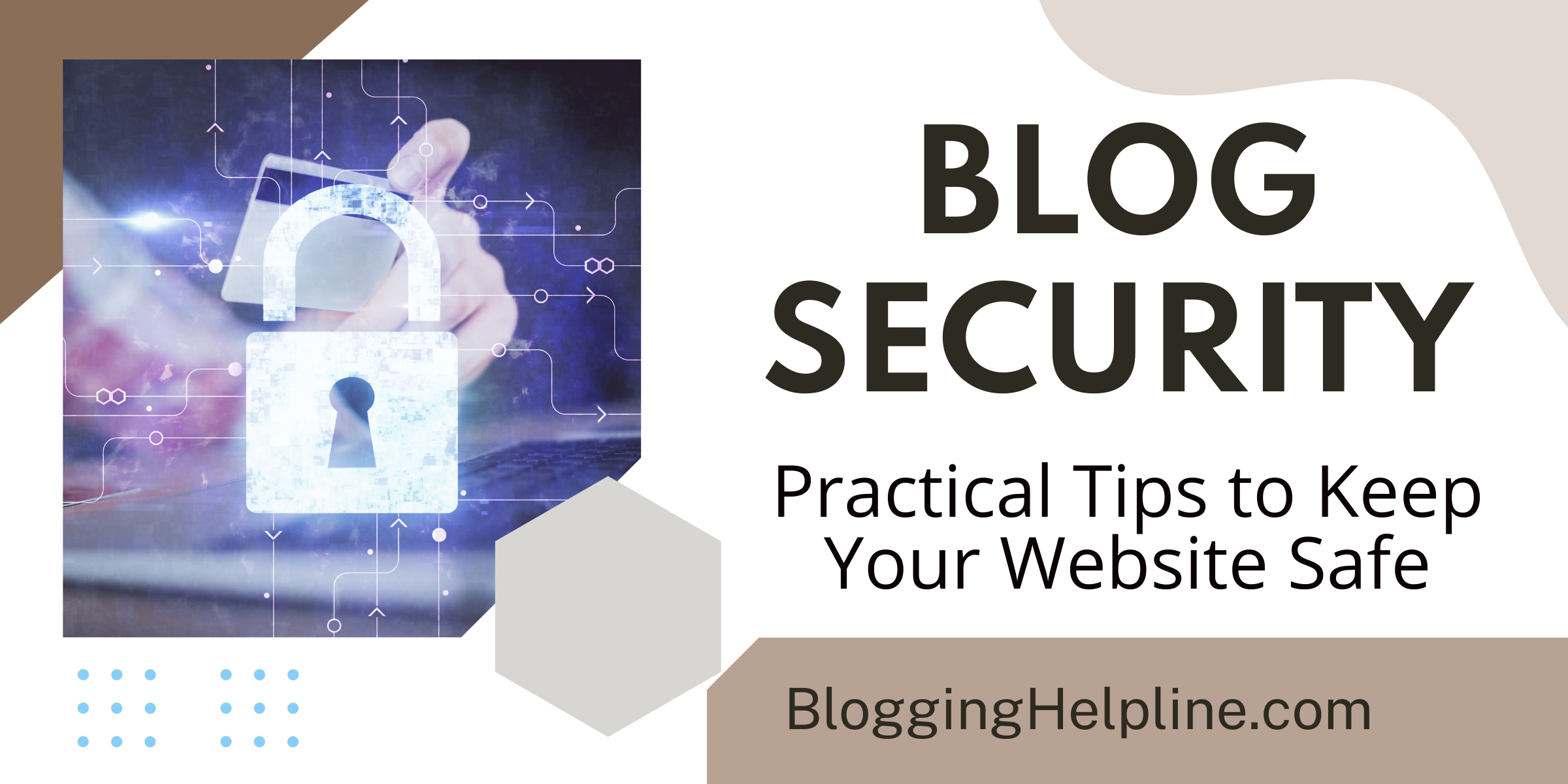Table of Contents
- Why is Blog Security Important?
- Common Threats to Blog Security
- Tips to Secure Your Blog
- Use Secure Hosts
- Keep Software Up to Date
- Use Strong Passwords
- Consider Two-factor Authentication
- Limit Access Rights
- Use HTTPS Instead of HTTP
- Regular Backups
- Conclusion
Introduction
In today’s digital age, every business and individual has an online presence, which has made blogs all the more important. Blogs have become a popular platform for sharing information, news updates, and opinions. However, with this rise in popularity, the need for blog security has become more critical than ever.
This article aims to provide a comprehensive guide to blog security, discussing common threats and providing practical tips on how to secure your blog.
Why is Blog Security Important?
Blogs often contain valuable and sensitive information, making them an attractive target for cybercriminals. Some common threats include:
- Malware
- Phishing
- Brute force attacks
- SQL injection
- Cross-site scripting
If a blog is not secure, it can result in sensitive information theft, website downtime, and damage to its reputation.
Consequently, it is essential to prioritize blog security and take appropriate measures to protect it.
Common Threats to Blog Security
Malware
Malware refers to malicious software designed to damage or disrupt computer systems. By infecting a blog, malware can cause severe damage to website visitors and its administrator.
Malware can be transmitted via links, email attachments, or unsuspecting downloads. It can cause denial-of-service attacks, steal sensitive information and credentials, and damage files and website content.
Phishing
Phishing is a common social engineering attack aimed at stealing sensitive information such as usernames, passwords, and credit card details. Typically conducted via email, phishing scammers disguise themselves as legitimate authorities and encourage victims to share their details for fraudulent purposes.
Phishing can also occur through fraudulent websites and links. Once a blogger clicks on the link, they may enter log-in information, which can be used against them.
Brute Force Attacks
A brute force attack is a hacking technique that involves attempting various combinations of usernames and passwords until the correct one is found. This way, an attacker can gain unauthorized access to a blog, steal data or cause damage.
Brute force attacks can be prevented by ensuring strong passwords and two-factor authentication.
SQL Injection
SQL (Structured Query Language) injection is a common technique used by cybercriminals to bypass authentication and gain unauthorized access to a database. By exploiting vulnerabilities in a blog’s database, they can obtain sensitive information or corrupt the database.
Cross-site Scripting
Cross-site scripting (XSS) is another common attack technique that enables cybercriminals to add malicious code to a blog’s HTML content. Attackers can use this code to hijack a user’s session, access sensitive information, and redirect the user to fraudulent websites.
Tips to Secure Your Blog
Here are some tips to help secure your blog:
Use Secure Hosts
Selecting a secure web host is an essential factor in ensuring blog security. Use a reputable and secure hosting provider that offers SSL (Secure Sockets Layer) encryption, which ensures data transferred between users and servers is encrypted.
Keep Software Up to Date
One of the most common ways cybercriminals gain access to a blog is through outdated software that is no longer supported. Ensure that you keep your content management system (CMS), theme, and plugin software packages up to date.
Use Strong Passwords
Passwords are one of the most vulnerable aspects of a blog’s security. Ensure that all users on the blog use strong passwords comprising of upper and lower case letters, numbers, and symbols. Consider using a password manager to help you manage and generate strong passwords.
Consider Two-factor Authentication
Two-factor authentication (2FA) adds an extra layer of security by requiring an additional authentication step, such as receiving an SMS code, to gain access to a blog. This further reduces the risk of unauthorized access even if someone guesses your password.
Limit Access Rights
Limiting access rights ensures that only authorized users can access the blog. Set user roles and permissions to enable some users to access some functionalities. Grant administrator access only to those who require it.
Use HTTPS Instead of HTTP
HTTPS (Hypertext Transfer Protocol Secure) ensures that all data exchanged between the server and the client is encrypted. Using HTTPS improves data security and assures visitors that they are accessing an authentic and secure website.
Regular Backups
Backing up your blog regularly will assure that even if it gets hacked or any issue occurs, you can quickly restore it with minimum data loss. Ensure to back up the blog files, databases, and any other essential information.
Conclusion
Blogs are an integral part of today’s online community, and it is crucial to prioritize their security. By following the above tips, you can reduce the risk of cybersecurity attacks on your blog. Make sure to use reputable tools and resources to ensure that your blog remains secure and private.
Remember to keep your software up to date, use strong passwords and two-factor authentication, limit access rights and back up your blog regularly. By taking these steps, you can significantly enhance your blog’s security, protect your visitors, and preserve the integrity of your brand.
